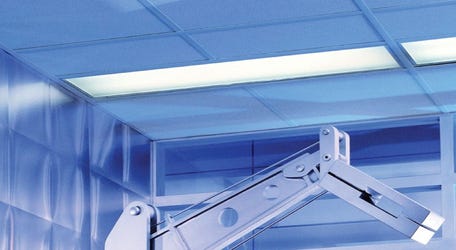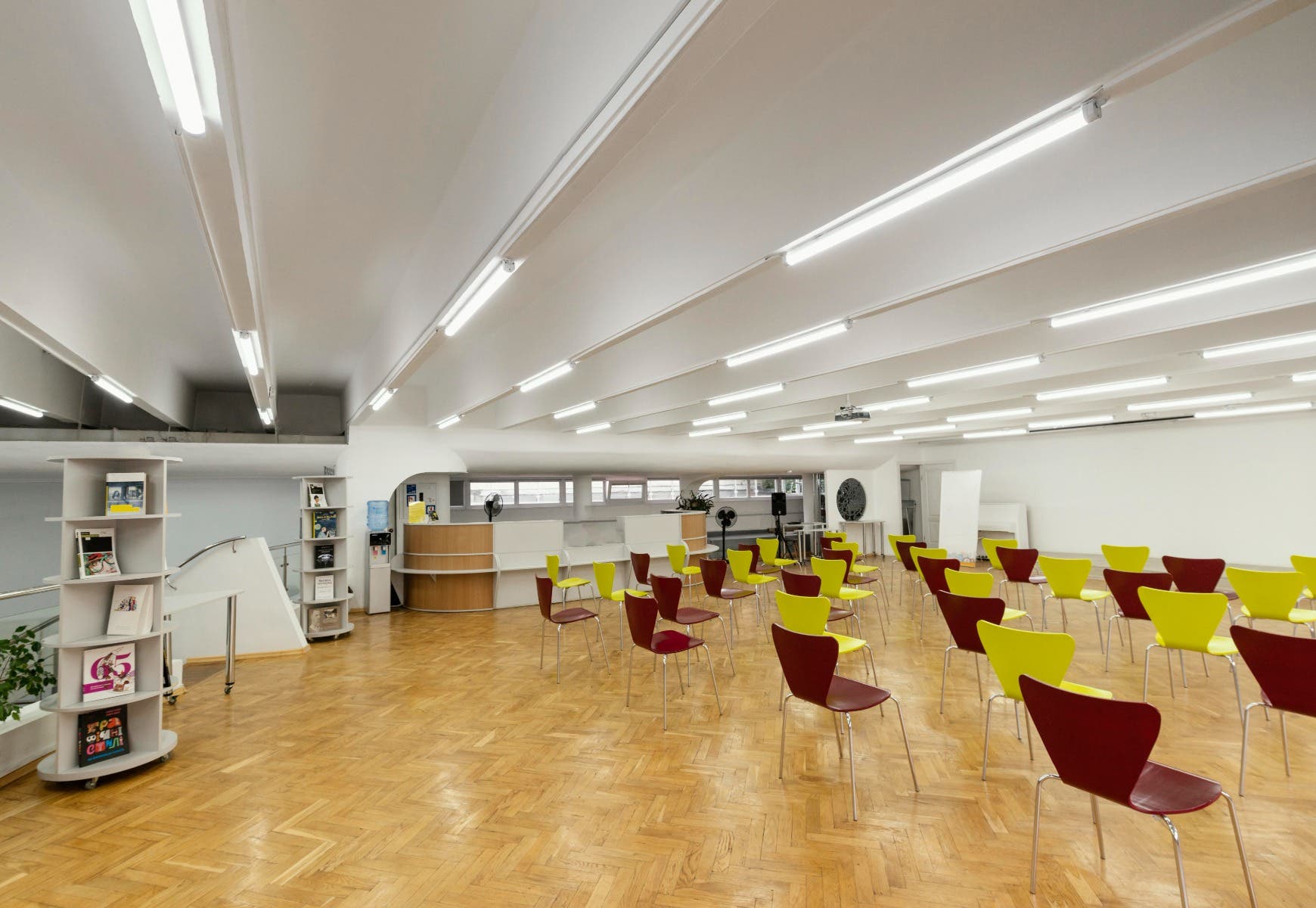Classroom Acoustics - The Problem, Impact, and Solution
Classroom acoustics are often overlooked, yet they play an important role in the overall success of learning and retention.
In order to ensure that your students and employees are as productive as possible, you need to make sure you're addressing any issues surrounding classroom acoustics, including:
- Reducing echo,
- Minimizing distractions from noise or speech,
- Preventing sound leakage.
This article will take you through some of the most common acoustic problems in classrooms.
Also, we will provide effective solutions for each one so that your students can focus on their work without being distracted by their surroundings.
How poor classroom acoustics affect students
The classroom is a place where students and teachers should be able to hear clearly, understand each other, and teach or learn effectively.
But many classrooms across the world are plagued by bad acoustics.
If you're a teacher, you know how frustrating it can be when your students can't hear you.
You might find yourself raising your voice to be heard, repeating what you've said over and over again, straining your voice to make sure everyone understands what you're saying, or resorting to yelling or shouting to get through to your class.
These are just a few ways that poor acoustics can impact classroom teaching.
The issue is no less frustrating for students on the receiving end of poor classroom acoustics. In fact, poor acoustics can actually have a significant impact on student learning.
Research has shown that speech intelligibility drops by about 15% - 20% for listeners with normal hearing when an environment becomes noisy.
For listeners with hearing loss (which affects up to 25% of young learners), this drop in speech intelligibility is even more dramatic - up to 35%.
This means that many students will struggle to understand their teacher's words in noisy environments like those typical of bad acoustics.
So, it's not news that classroom acoustic problems negatively affect students' cognitive development.
For this reason, it is recommended a maximum noise level of 35 dB in unoccupied classrooms and the STI (speech transmission index) should range from 0.6 to 0.75
This recommendation is based on the assumption that the minimum speech level in any classroom should be at least 50 dBA and that the signal-to-noise ratio (SNR) must be at least þ15 dB at students' ears.
4 Common acoustic problems in classrooms

Reverberation
Reverberation is a big problem in many classrooms because it prevents students from understanding what their classmates are saying.
It can cause them to be distracted as they try to listen to a classmate speak. Reverberation may also make teachers' voices difficult for students to understand.
When classroom acoustics are poor, teachers and students must raise their voices to be heard.
This increases fatigue over time, leading some teachers and students to seek other ways of communicating—in person or via text message or email—rather than talking face-to-face in class.
Poor acoustics also limit active participation opportunities during class discussions.
Background noise
Background noise can not only be distracting, but it also has a major impact on student test scores.
One study found that poor classroom acoustics (i.e., sounds bouncing off walls or other surfaces) have been linked to as much as a 15% drop in test scores.
What's more, is that teachers who work in loud classrooms are much less likely to consider their schools' effective environments for learning.
If your goal is improving student performance and retention rates within your school district, look into investing in new classroom materials—especially soundproofing systems.
You'll find both active and passive sound absorption wall treatments that allow you to control how much (or little) sound actually passes through your walls.
Lack of speech intelligibility
Good classroom acoustics are essential to effective learning. But it's not always easy to achieve.
Stacks of chairs scraping across linoleum floors or overheads that reverberate like an off-key chorus are common acoustic problems in classrooms.
Sometimes these acoustic issues can be traced back to specific classroom design features; other times, they can't.
Regardless of their cause, sound treatment should be considered a critical design element when building new classrooms or improving existing ones—and that's where acoustic ceiling panels come in.
Lack of sound absorption in the floor and ceiling
In a typical classroom, hard surfaces make up the floor and ceiling.
But, these hard, flat surfaces (like tile or linoleum) can reflect sound like a mirror reflects light.
These reflections bounce back into classrooms, making it difficult for students to hear what's being said.
The problem with classroom acoustics is that there is no sound absorption in the ceiling or floor, which results in high noise levels.
This problem is particularly true in classrooms where you find tile floors (great for drop and bounce).
If we were to put sound acoustic ceiling panels and a carpeted floor, we would significantly reduce those noise levels.
How acoustic ceiling panels can help improve classroom acoustics
Acoustic ceiling panels are designed to treat sound and reduce noise by absorbing the noises that reflect off walls, floors, and ceilings.
Sprinkled throughout a space or strategically placed, acoustic ceiling panels can help reduce unwanted noise and echoes in any classroom environment.
Acoustic ceiling panels are surface mounted to the existing ceiling using special hardware, making them easy to install.
These panels come in a variety of textures and colors, so they can be customized to meet each classroom's unique needs.
Acoustic ceilings are a great solution for improving the acoustics of your children's educational environment.
Acoustic ceilings have been shown to reduce unwanted noise levels in classrooms by as much as 50%.
This reduction allows teachers to speak with lower voice levels and increases students' ability to hear and understand what is being taught.
In addition, these acoustic ceiling panels have been shown to reduce the reverb or echo within a room.
This reduction allows students' voices to sound clear to their classmates while they are speaking.
Students who have auditory processing issues can benefit from this immediately as they often have difficulty discriminating between two people talking at once.
Acoustic ceiling tiles are an affordable solution to classroom acoustics issues.
And they aren't just for classrooms. They come in various shapes and sizes that can also be used at home, offices, halls etc.

Other ways to improve classroom acoustics
Adjusting classroom acoustics is usually a multi-step process.
But there are other things you can do to make your classroom more inviting to students who have difficulty hearing.
First, identify your classroom acoustics problem:
- Are you getting sound through a microphone, but it's hard to hear?
- Is it distracting when one side of a class is quiet, and another side is noisy?
- Do students have trouble hearing themselves speak?
Second, look for acoustic solutions.
- Removing or masking any sound-reflecting surfaces in the classroom, such as glass cabinets and doors, hardwood floors, and painted concrete walls.
- Using carpeting and fabric-covered furniture in the room. Sound waves cannot reflect off of these materials, so they absorb more sound.
- Adding acoustic panels to the walls. The fabric covering the panels absorbs sound waves rather than reflecting them. The panels may also be used to hide equipment such as projectors, speakers, and air conditioning units which can be noisy.
- Placing a rug on the floor, especially in front of the whiteboard or projector screen, where students often gather for group discussion or activities.
- Installing curtains around windows to keep out noise from outside the building as well as inside (slamming doors are a common source of distraction).
Conclusion
The design solution to classroom acoustics is important because it is a key issue that can significantly impact students' performance.
Creating quiet, calm, and conducive spaces only benefits the classroom environment.
If students and teachers can concentrate better and work at their full potential, the outcome will be better student performance.
Great decisions can result in great outcomes.
Having the right acoustics will lead to greater comfort levels, better language skills, increased classroom focus and potentially improved learning outcomes.











